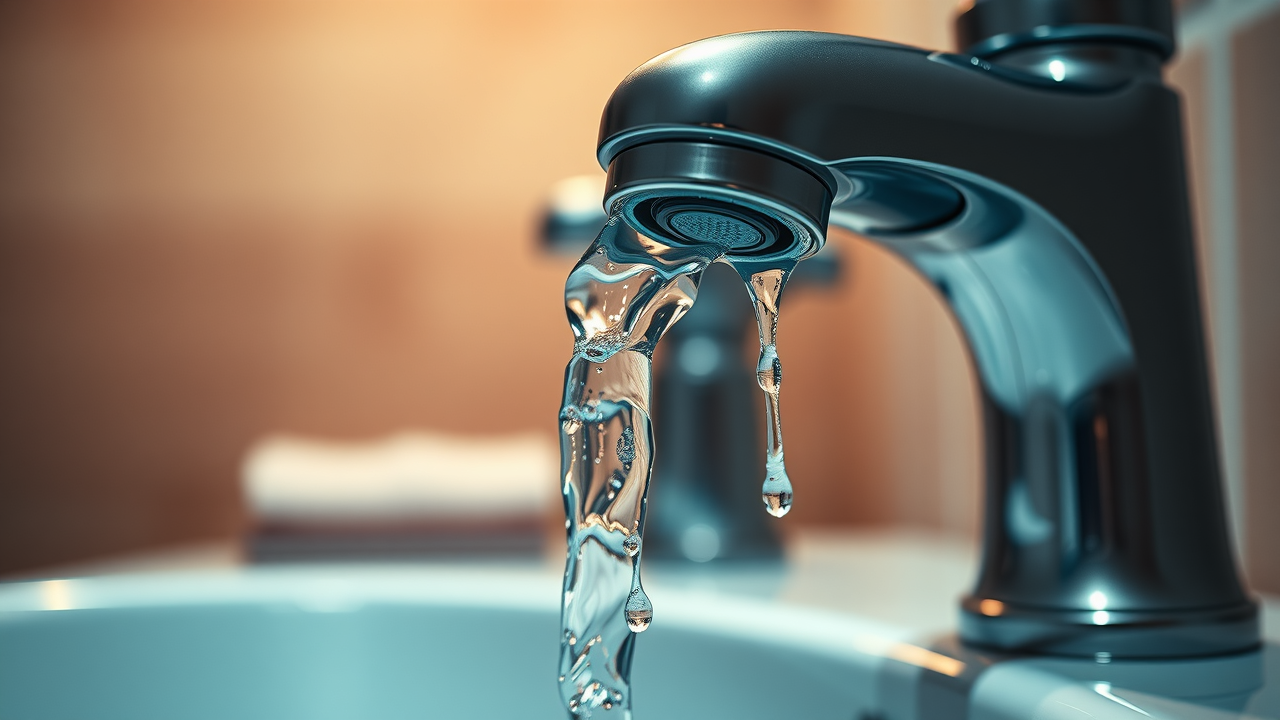Imagine this: “Did you know water leaks under the foundation account for more than 10% of all property damage claims nationwide?” Most homeowners never suspect a hidden water leak could be slowly destroying their slab foundation until it's too late. Slab leaks can remain undetected for months—eroding your home’s structural integrity and sending your water bill skyrocketing. In this comprehensive guide, you’ll discover the underlying causes of slab leaks, how to spot early warning signs, and expert-backed solutions to keep your foundation safe from water damage and repair costs that can spiral out of control.
Startling Statistics: The Hidden Threat of Slab Leaks
The numbers paint a sobering picture: slab leaks result in millions of dollars in insurance claims annually, with water damage from foundation leaks ranking among the top causes of costly repairs for homeowners. Industry estimates suggest that more than 10% of all property damage claims stem from water leaking beneath the concrete slab of homes—often undetected until serious consequences appear. Not only do slab leaks threaten the structural integrity of slab foundations, but they also create fertile ground for mold growth and lead to sudden jumps in your water bill.
These issues make understanding the cause of slab leaks not only a matter of financial prudence but a vital part of responsible homeownership. Early detection and proactive leak repair can be the difference between a manageable plumbing issue and catastrophic water damage affecting your entire property. Whether your home is new or decades old, knowing what factors put your slab foundation at risk can help you avoid stressful emergency repairs and damage that insurance may not cover.
"Did you know water leaks under the foundation account for more than 10% of all property damage claims nationwide?"
What You'll Learn About Causes of Slab Leaks
- The primary causes of slab leaks in residential and commercial buildings
- How slab leaks impact your slab foundation and structural integrity
- Warning signs such as warm spots, rising water bills, and water damage
- Best practices for slab leak detection and leak repair
- The implications for insurance and water pressure issues
Understanding Slab Leaks: Foundation and Plumbing Basics
What is a Slab Leak?
A slab leak occurs when water pipes or plumbing lines running under a home’s concrete slab foundation begin to leak or break. These water pipes transport both hot water and cold water throughout your home, and once they are compromised, water seeps directly into or underneath the concrete slab. Because these concrete slab foundations are typically hidden from view, it can be challenging to detect a problem until visible warning signs arise—like mysterious warm spots, water damage, or changes in your water bill.
Over time, a slab leak can have serious implications for your house. Persistent leaks increase the risk of erosion and destabilization of the concrete foundation, threatening the structural integrity of the entire building. If left unaddressed, mold growth, foundation issues, and high repair costs become almost inevitable. Recognizing the signs of a slab leak early enables faster leak repair and minimizes damage, preserving your investment and peace of mind.
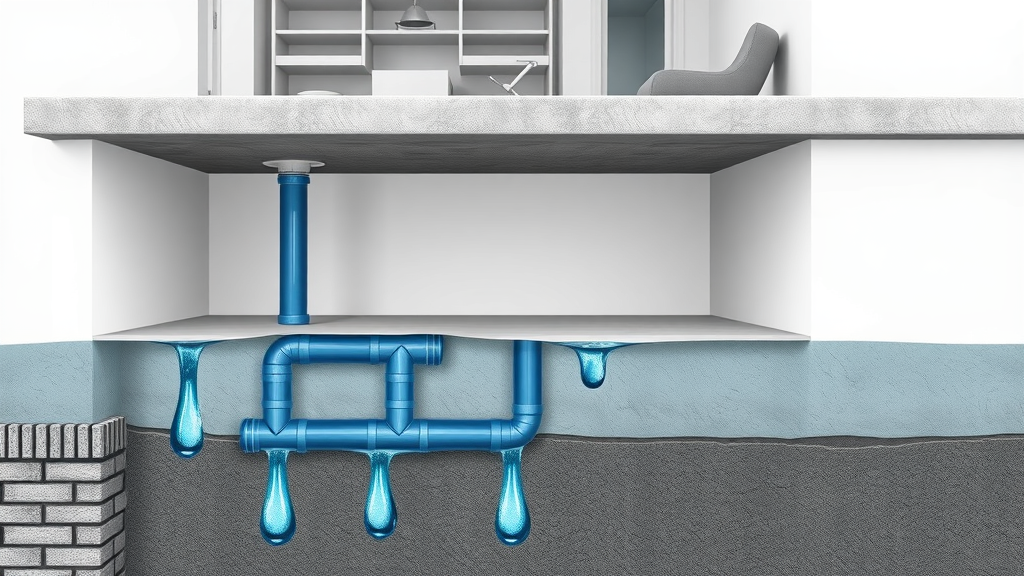
How Concrete Slab Foundations Are Constructed
Concrete slab foundations are favored for their strength, cost-effectiveness, and low maintenance needs. The construction process starts with leveling the ground, installing a vapor barrier, and placing plumbing lines and water pipes in a specific layout beneath the slab area. Once these water lines and pipes are secured, concrete is poured directly over them, often in a single, continuous layer several inches thick. The finished product is a solid, seamless base that supports the entire structure above.
However, there are vulnerabilities inherent in this design. Pipe layouts must accommodate water lines servicing every part of the home, meaning numerous bends and joints are embedded within the slab. Older homes sometimes have outdated materials like galvanized steel, which corrode over time, while new builds might suffer from rushed or poor installation practices. In either case, even small construction errors or shifting soil beneath the foundation can make these pipes susceptible to leaks—setting the stage for potential slab leaks that can undermine your home’s concrete foundation.
- Pipe layouts beneath slab foundations
- Key components of a concrete slab foundation
- The vulnerability of older slab foundations
Common Causes of Slab Leaks in Modern Homes
Corrosion of Pipes Under Concrete Slab
One of the leading causes of slab leaks is pipe corrosion beneath the concrete slab. Over time, water pipes—especially copper or galvanized steel—can deteriorate due to prolonged contact with minerals in the soil, slight shifts in soil pH, or even chemical reactions caused by soil composition and water quality. When these pipes corrode, they become thin and weak, allowing water to escape and create a damaging leak that’s almost impossible to see from above. This slow erosion can lead to water pooling under the slab, mold growth, and eventual cracks in the concrete slab foundation itself.
Factors like electrolysis (stray electrical currents) and reactions between plumbing materials and the surrounding earth further accelerate the corrosion process. If your home is older, the risk of corroded pipes is even higher, making it essential to schedule regular plumbing inspections and leak detection to catch issues early. Not only do corroded pipes drive up your repair costs over time, but they can also compromise the structural integrity of your house if left unchecked.
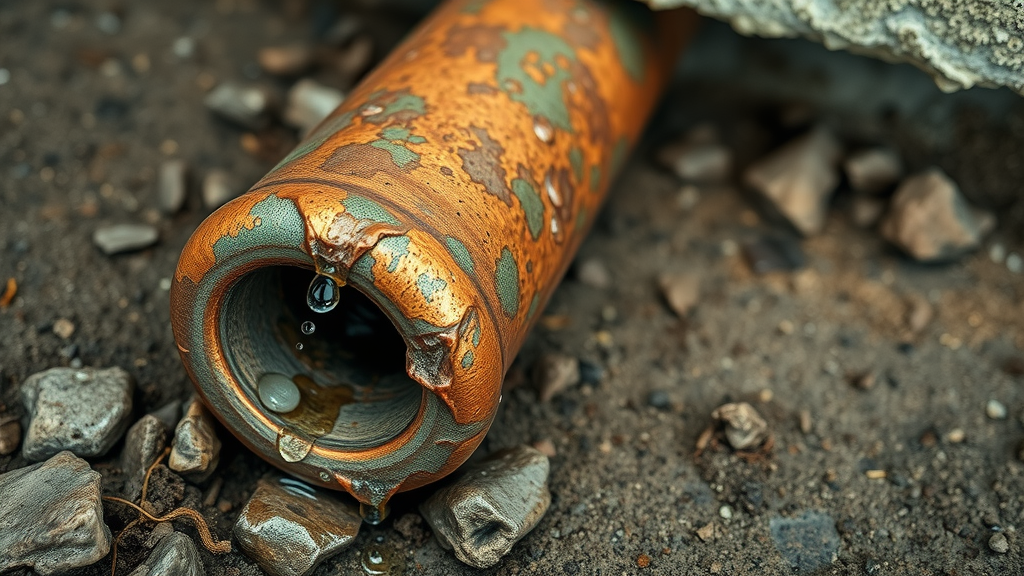
Shifting Soil and Foundation Issues
Shifting soil—caused by seasonal moisture changes, plumbing leaks, or ground instability—contributes to foundation issues and is another significant factor behind slab leaks. Expansive clay soil, common in many parts of the United States, absorbs water and swells, while drought causes it to contract. These constant shifts create movement under your slab foundation, placing immense pressure on buried water pipes. Eventually, even slight movement can create small cracks, ruptures, and stress points, making slab leaks almost inevitable.
In severe cases, soil movement can lead to visible foundation cracks, uneven floors, or new gaps between walls and baseboards. If you suspect a slab leak due to recent soil movement or visible cracks, act quickly. The sooner you address these foundation issues and conduct a leak detection assessment, the easier it is to prevent expensive water damage and restore your home’s structural integrity.
Poor Construction of Slab Foundations and Plumbing
Construction errors pose another hidden risk for slab foundations. Mistakes during the pour—such as insufficient reinforcement, hasty water pipe installation, or use of substandard building materials—result in weak points beneath your concrete slab. Poor plumbing practices, like leaving pipes in direct contact with rebars or concrete aggregate, can cause pipe abrasion with even the slightest vibrations, making leaks more likely over time.
Older homes are especially vulnerable to these construction faults, as piping and techniques from past decades may not meet today’s code. If your residence has a history of foundation repairs or if you’ve noticed cracks early in the life of your slab, consider a professional leak detection scan to ensure your plumbing system is functioning safely. Proactive intervention ensures the longevity of your foundation while minimizing future repair costs.
Water Pressure Fluctuations and Structural Integrity
High or unstable water pressure is a silent saboteur for your plumbing system. When the pressure inside water lines is consistently too high, it causes pipes to flex and strain against the concrete encasement. This force leads to microcracks and eventual ruptures—a primary cause for those unexplained slab leaks. Even sudden spikes or irregular drops in pressure can disturb pipe joints under the slab, resulting in slow leaks that damage your foundation over time.
The danger is compounded by hot water pipes, which expand more than cold water lines and are often the first to fail. If you experience persistent changes in water pressure, visible foundation shifts, or recurring plumbing issues, tests and adjustments should be made by a licensed plumber. Left unchecked, water pressure problems can escalate small leaks into serious threats, putting your home’s structural integrity in jeopardy.
Aging Plumbing Systems and Metal Fatigue
As your home ages, so does its plumbing system. Metal fatigue becomes a real concern, with repeated use weakening joints and pipes hidden under the slab. Older materials—like copper, galvanized steel, or early plastics—become especially fragile after decades of exposure to water, vibrations, and thermal expansion from hot water pipes. The risk of electrolysis increases as stray currents travel through the plumbing, accelerating wear and tear.
Chemical interaction between certain soils and pipe types may also lead to premature degradation or corrosion. Poor installation practices, such as not anchoring pipes properly or missing protective sleeves, only add to the risks. If your home is more than 30 years old, routine leak detection is essential to prevent slab leaks, costly water damage, and disruptive repairs down the road.
- Electrolysis and stray currents
- Chemical reactions between pipes and soil
- Poor installation practices
Early Warning Signs: How to Suspect a Slab Leak
Warm Spots and Warm Areas on Floors
One of the first red flags that you may be dealing with a slab leak is the appearance of unexplained warm spots on your flooring, particularly where hot water pipes run underneath the slab foundation. These “hot zones” often feel like a subtle, persistent patch of heat—even when all appliances are off. Homeowners might notice their pet or toddler preferring a unique warm spot on cold mornings. If you suspect a slab leak, this simple observation can signal hidden water pipes leaking below the surface, resulting in heat transfer and even potential steam beneath the concrete slab.
If left uninvestigated, these areas can grow larger, signaling a spreading leak that could cause cracks, warping, or eventual mold growth. As soon as you notice one or more warm areas on the floor, especially where there shouldn’t be, arrange a professional inspection to protect your home’s structural integrity and avoid expensive repair costs.
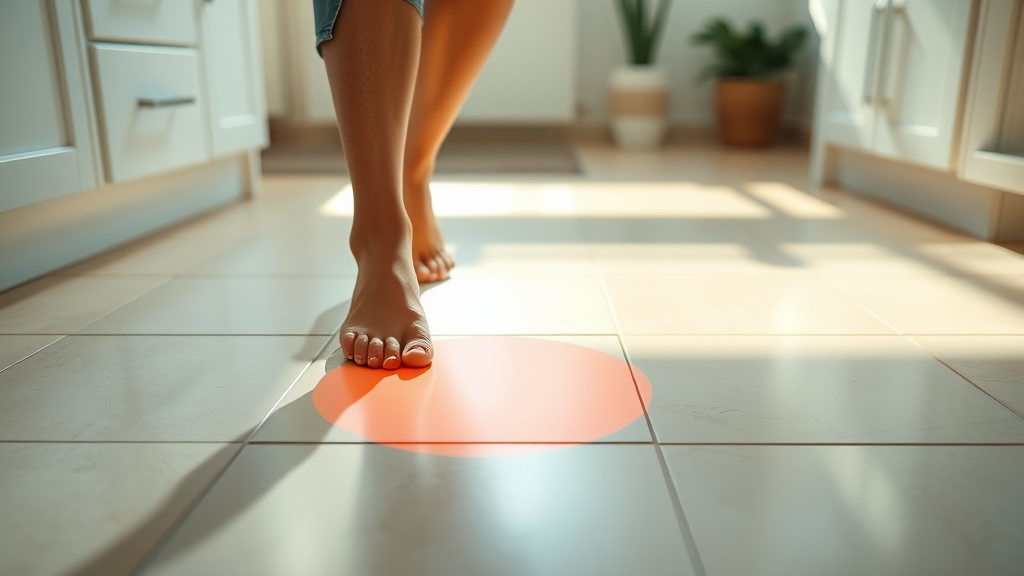
Unexplained Increase in Water Bill
A sudden or steady rise in your water bill—with no change in household consumption—is another clear indicator of a possible slab leak. Leaks under the concrete slab can allow hundreds of gallons to escape into the ground each month, totally invisible yet continuously draining your wallet. Carefully reviewing your water usage each cycle provides a critical layer of defense against undetected leaks.
Increased water bills often accompany other subtle symptoms such as reduced water pressure, damp carpets, or unexplained wet patches in your yard. If you cannot explain a jump in costs by normal seasonal changes, family visits, or new appliances, investigate promptly. Early leak detection will save both money and the headache of emergency repair costs.

New Cracks in Concrete Slab or Slab Foundation
Fresh cracks in your concrete slab foundation demand your attention. These can form due to plumbing leaks eroding the ground beneath your home, causing parts of the foundation to settle unevenly. A small, jagged split in the floor or a new separation where the wall meets the baseboard can quickly turn catastrophic if it accompanies other warning signs of wetted soil or water damage.
Addressing these cracks quickly can prevent a small slab leak from developing into a much larger, more expensive problem. Mold growth, foundation instability, and significant repair costs can all result if early interventions are not performed. Never ignore a newly formed crack or unexplained gap—especially in combination with other symptoms like warm spots or increased water bills.
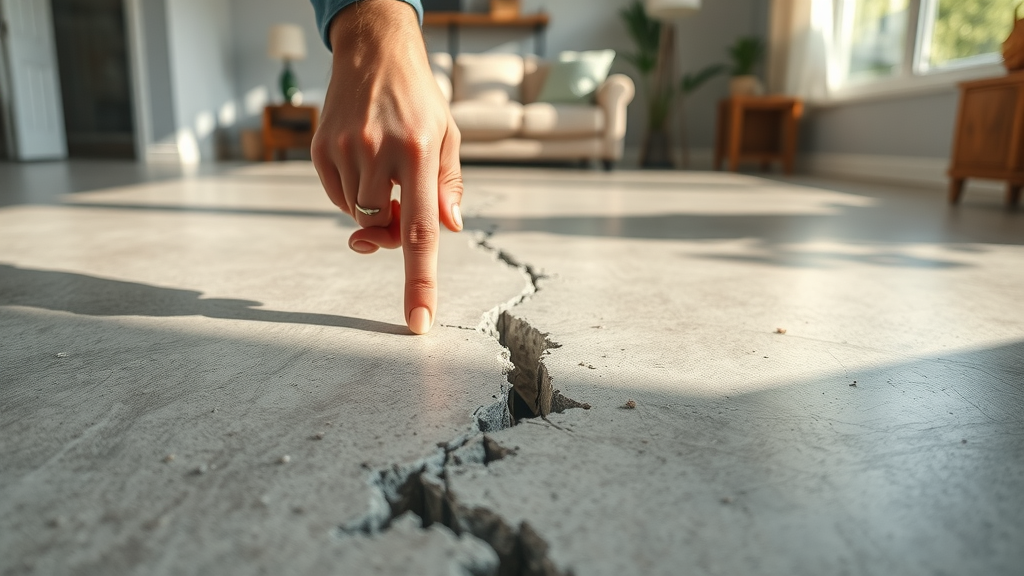
Sounds of Running Water with All Taps Off
Hearing the persistent sound of running water when all faucets and appliances are off is a sure sign of a hidden leak, often a slab leak. These subtle noises may sound like hissing, running, or trickling and can usually be heard most clearly at night or during quiet moments. It typically signals water is moving through an unintended, continuous path—such as a damaged pipe under your slab foundation.
If you suspect a slab leak due to continuous water sounds, immediately turn off your home’s main water supply and contact a professional for leak detection. Quick action can make the difference, minimizing both repair costs and structural compromise.
Visible Water Damage Inside and Outside
Signs of water damage both inside (warped flooring, damp spots, peeling paint) and outside (puddles near the slab, soggy soil, or unexplained lush vegetation) point toward ongoing leaks. Damage might also include soft drywall, a musty odor, or the appearance of mold in odd locations. When a slab leak is to blame, it’s crucial to act swiftly to avoid long-term health risks and further foundation issues.
These symptoms often signal an established leak, meaning the underlying damage could be severe. Document anything out of the ordinary and seek professional leak repair to restore your concrete foundation and home safety.
Leak Detection: Finding the Source of Slab Leaks
Professional Methods for Slab Leak Detection
The gold standard in modern leak detection relies on advanced tools and a trained eye. Leak detection specialists use a combination of infrared thermal imaging, sensitive electronic listening devices, and pressure testing. These noninvasive techniques help pinpoint the exact location of the leak beneath a slab foundation—without causing unnecessary damage to your floors or walls.
Thermal imaging can reveal heat transfer caused by hot water leaks under the concrete slab, while sound amplification detects the subtle movements of water through cracks or broken pipes. Pressure testing isolates suspect water lines and can help localize the area for targeted repair. Always hire a licensed plumber or leak detection specialist for the best results, especially if your symptoms are ambiguous or your home history suggests risk factors for slab leaks.
DIY Tips for Suspect a Slab Leak Diagnosis
While comprehensive detection should be left to professionals, homeowners can take preliminary steps to suspect a slab leak. Begin by checking for visible signs—unexpected warm spots, damp carpets, or a rising water bill. Next, shut off all water-using appliances and listen carefully throughout your home for any running water noises. If your water meter spins even with every faucet closed, you likely have a hidden leak.
For further confirmation, monitor your water bill over several cycles and check for recurring anomalies. If problems persist after simple checks, don’t delay: professional assessment prevents more invasive damage and larger repair costs.
- Infrared imaging
- Electronic listening devices
- Pressure testing around concrete slab foundation
Animated Guide: How Leak Detection Works for Slab Leaks
Slab Leak Repair Solutions: Protecting Your Home’s Foundation
Trenchless Slab Leak Repair vs. Traditional Leak Repair
Repairing a slab leak doesn’t always mean your entire foundation will be torn up. Trenchless slab leak repair is a game-changer, utilizing advanced epoxy lining or pipe-bursting technologies to fix leaks without major damage to your floors or yard. These methods cure or replace pipes in place, restoring water flow quickly and reducing overall repair costs.
In contrast, traditional slab leak repair often involves cutting through the concrete to access leaking water pipes directly—a more invasive solution with greater disruption and higher risk of further foundation issues. The right option will depend on the location of the leak, age of your plumbing system, and overall health of your slab foundation.
Choosing the Right Repair Method for Your Slab Foundation
Choosing the most effective leak repair strategy requires balancing the extent of the leak, accessibility of your pipes, and the age or condition of your slab foundation. In many modern homes, trenchless methods are preferred for their minimal property disruption, lower costs, and rapid completion timeline. However, significant structural movements, severe pipe corrosion, or inaccessible water lines may necessitate the reliability of traditional concrete slab access and replacement.
Consult with a licensed plumber experienced in both traditional and advanced leak repair. Request detailed estimates and a clear repair timeline to avoid surprises. In all cases, rapid intervention is crucial to prevent new cracks and persistent water damage that can compromise the foundation’s long-term strength.
How Immediate Leak Repair Saves Structural Integrity
The most important factor in preserving your home’s safety and value is acting quickly when you suspect a slab leak. Early leak repair minimizes water saturation in soil, stops new foundation cracks from forming, and prevents costly mold remediation or large-scale slab foundation upgrades. Many insurance policies require proof of swift response before approving payout—another reason prompt, professional intervention is a homeowner’s best defense.
Whether your solution involves minimal pipe rerouting, trenchless epoxy lining, or more comprehensive foundation work, every moment saved after detection reduces the physical and financial impact of a slab leak.
- Pros and cons of epoxy pipe lining
- When to reroute pipes
- Minimizing damage to the concrete slab
People Also Ask About Causes of Slab Leaks
What causes slab leaks?
Answer: Slab leaks are typically caused by corrosion, high water pressure, shifting foundations, poor construction, and aging plumbing beneath the concrete slab foundation.
How to find source of slab leak?
Answer: Leak detection professionals use electronic listening tools, thermal imaging, and pressure tests to pinpoint the source of a slab leak under slab foundations.
How serious is a slab leak?
Answer: Untreated slab leaks can compromise the structural integrity of your foundation, cause extensive water damage, and drive up repair costs and your water bill.
Will insurance pay for a slab leak?
Answer: Some home insurance policies cover certain aspects of slab leak repair if the damage is sudden and accidental, but specifics vary—always check your policy details.
FAQs About Slab Leak Repair, Detection, and Prevention
- How long does slab leak repair typically take? Most repairs can be completed within 1–3 days, although the exact timeline depends on the repair method, extent of damage, and accessibility of the pipes beneath your slab foundation.
- Are there warning signs of slab leaks to watch for in new constructions? Yes. Even new homes can experience slab leaks if the plumbing system was poorly installed or if excessive water pressure exists. Watch for unusually warm spots, elevated water bills, or foundation cracks.
- Does high water pressure contribute to slab foundation issues? Yes. Persistent high water pressure can stress pipes under the slab, eventually leading to cracks, ruptures, and slab leaks that threaten the structural integrity of your foundation.
Expert Quotes: Insights on Slab Leaks and Foundation Issues
"Early leak detection is critical to preserving the structural integrity of slab foundations and minimizing the cost of slab leak repair."
Key Takeaways: Protecting Your Home from Causes of Slab Leaks
- Monitor for warning signs like unexplained water bills or warm spots
- Schedule regular leak detection and plumbing inspections
- Address slab foundation issues quickly to avoid major repairs
Slab Leak Myths Busted: What Every Homeowner Needs to Know
Next Steps: Professional Help for Slab Leak Repair
Call us today if you are experienceing a plumbing emergency - 714-290-7401
Conclusion
Don’t let hidden plumbing issues undermine your investment—know the causes of slab leaks, watch for warning signs, and take action early for safer, more secure home ownership.
Sources
- https://structuretech.com/blog/slab-leak-how-do-you-know/ – Structure Tech
- https://www.statefarm.com/simple-insights/home-ownership/slab-leaks-and-your-foundation – State Farm
- https://www.familyhandyman.com/project/how-to-detect-and-fix-a-slab-leak/ – Family Handyman

